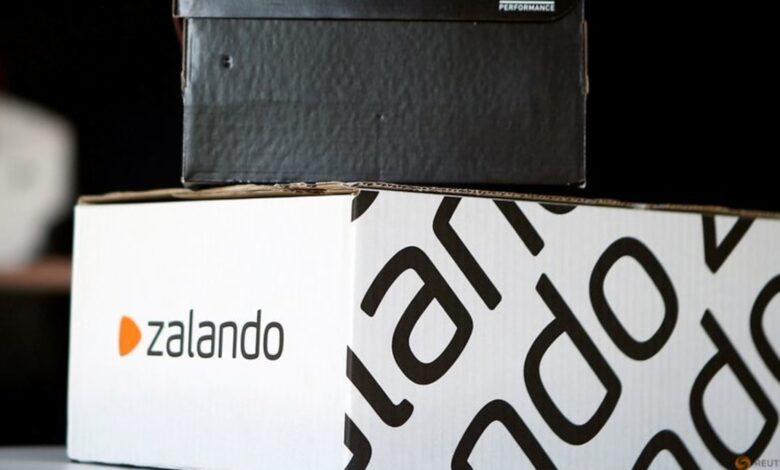Online retailer Zalando returns to growth thanks to premium brands

:Online fashion marketplace Zalando returned to growth in the first quarter after three consecutive declines in gross merchandise volume, as bets on more premium brands and its business servicing other retailers paid off.
While fast-fashion retailer Shein is a threat to Zalando’s revenues and customer numbers, Chief Financial Officer Sandra Dembeck said the company does not want to compete on price, instead trying to differentiate itself with a range of higher-priced brands such as On Running, which it recently added.
“We do not want to compete in the ultra fast fashion, ultra low price point segment,” Dembeck said in a press conference. Zalando’s average order value increased to 60.4 euros ($65) in the first quarter, from 57.3 euros a year earlier.
Quarterly gross merchandise volume (GMV) – a key revenue metric measuring the total value of all goods sold – rose 1.3 per cent to 3.27 billion euros from 3.23 billion a year earlier, the German online fashion retailer said.
At 0820 GMT, the company’s shares were up 7 per cent.
As inflation has hit demand for clothes, Zalando has sought new revenue drivers and started offering its platform and logistics network as a service to other retailers and brands.
Revenue from Zalando’s business-to-business (B2B) service was up 13 per cent at 215 million euros.
Zalando’s number of active customers fell, however, to 49.5 million from 51.2 million a year earlier, and revenue dipped 0.6 per cent to 2.24 billion euros.
Along with weaker demand after a pandemic-fuelled surge in online shopping, increased competition from Shein – which sells $5 T-shirts and $10 shoes – has weighed on Zalando.
Dembeck said the decline in Zalando’s customer numbers could partly reflect shoppers turning to “new incumbents” with lower prices, but was also a result of Zalando introducing a minimum order value of 29.90 euros to qualify for free delivery as it focused more on profitability.
“We feel that with that, we’re in a very healthy position because now we can really leverage those active customers (and) increase their spend with us,” she said.
In a bid to reduce the number of returns – a major threat to profits for online retailers – Zalando developed a tool to predict sizing based on photos submitted by customers, and launched the service in Spain, France and Italy in the first quarter, adding to Germany, Austria and Switzerland.
Adjusted earnings before interest and tax (EBIT) swung to a profit of 28.3 million euros from a loss of 0.7 million euros a year earlier.
Zalando confirmed its outlook for GMV and revenue to grow as much as 5 per cent in 2024, with adjusted EBIT of 380-450 million euros.
($1 = 0.9291 euros)

